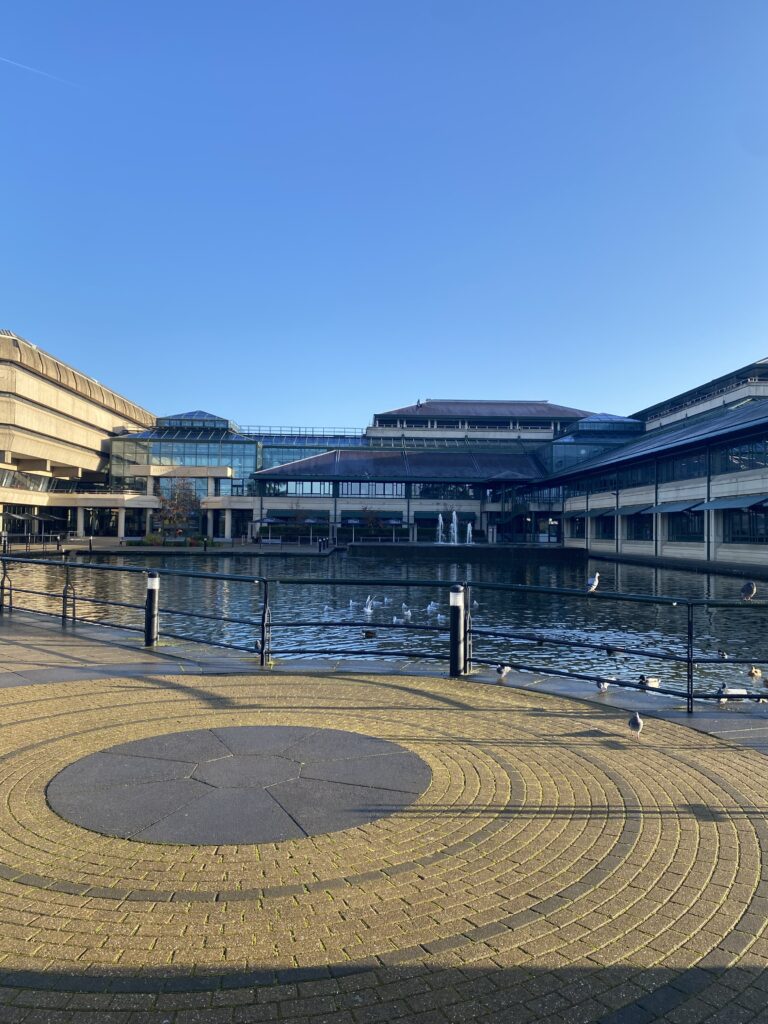Research and Holdings in the National Archives Kew, London – An archival trip to the U.K. – by Raphaela Bollwein and Lena Christoph
The National Archives (TNA) of the United Kingdom are located in Kew, London and their collection is one of the largest in the world, with over 11 million historical and governmental records. The Archives were founded as a result of a cooperation between the Public Record Office and the Historical Manuscript Commission.[1]
For the GLORE project, the TNA contain relevant documents on the issue of resettlement and repatriation of different groups of displaced persons (DPs) after World War II – most notably, holdings of the Allied Military Government of Occupied Territories in postwar Europe as well as of the UNRRA and IRO.[2] The majority of these documents are part of the Foreign Office records and comprise the coordination and arrangements with different aid organizations, general correspondence, as well as reports of conferences, committees, and councils. For their respective dissertation projects, Raphaela Bollwein and Lena Christoph spent two weeks at the archives to research these records.

Researching the situation of unaccompanied children as displaced persons, Raphaela Bollwein discovered different national and confessional emigration programs for orphaned or abandoned children in the post war period besides the general work of UNRRA and IRO and within their agreement. Particularly interesting findings were for example booklets and “advertising” material on emigration schemes, schools, and orphanages for children.
“[…] the most successful migrants would be the children.”[3]
The British government devised a plan to bring unaccompanied children to Australia and Canada, where they would be sent to farm schools to acquire agricultural skills. The aim of the program was to emigrate mostly children who “lack ordinary family care and protection […], to make good and useful citizens of Australia and Canada”[4]. The child migrants of both genders with an average age of 8 years were accommodated in remote places, such as the Kingsley Fairbridge Farm in Pinjarra, Western Australia. Here they were trained in planting and harvesting vegetables, caring for the farm animals, doing laundry and dishes, or being instructed to metal or wood trade. The farm was designed to care for 200 children under the care of cottage mothers. Besides the farm work, they had to attend the Primary School located on the property and the Pinjarra Junior High School outside the farm grounds.[5] For the reasons of “Assimilation and Australianisation”, the older children had the “opportunity of mixing with Australian children” at Junior High School as well as at private homes of foster parents during school vacations in May and August.[6]

The children did a lot more domestic and agricultural work than they would have done in other children’s homes. Their daily routine was strictly regulated, but their pocket money payments were “rather small”. The older “duty boys” also had to work after school and on the weekends for which they received only 2£.[7]
This arrangement of the British Government under the pretence of humanitarian aid for orphaned children also caused a great tragedy when thousands of parents were persuaded to sign over legal guardianship of their children to Fairbridge Farm to solve the problem of child poverty in Britain and upgrade the colony in Australia. Researchers like David Hill have ascertained that the children themselves often were told they were orphans and that sexual abuse was not uncommon, food was often inedible and school education was poor.[8] This example obviously shows that unaccompanied children were often required to emigrate for specific purposes and that their interests could be neglected for other political or economic interests. For some, children were seen as “best possible immigrants” who could be formed according to certain ideas.
“The nature of the D.P. problem in the Far East differs widely from that obtaining in Europe.”[9]
In her research, Lena Christoph focusses on the displaced persons operation in the Philippines after the war. The Foreign Office Files at the National Archives contain documentation of the DP operation in East Asia and the Pacific, such as UNRRA, IRO, as well as governmental material. Particularly interesting were the files that deal with the establishment of the operations and offices in the “Far East”. In order to ascertain the DP situation after the end of the Pacific War, UNRRA sent a mission to different countries, including China, Hongkong, British Malaya, Burma, Siam, Indochina, Netherland East Indies, as well as the Philippines. The mission left in October 1945 and finished in January 1946. Cassin A. Soorma was the only one of the four mission personnel who visited the Philippines.
The first report in December 1945 states: “There are very few displaced United Nations nationals in the Philippines, except for a group of approximately 4,000 Chinese”[10]. The number of the Chinese DPs was corrected in a later report to 9600[11] and also added: “There are approximately 650 European Jewish refugees in Manila. Of these, 450 are German Jews, 150 are Austrian Jews, while the remainder are from Poland, Czechoslovakia and Hungary.”[12] On the cover page of the report, British officials noted: “I think we should challenge the statement that UNRRA assistance may be required in resettling Jews from Manila”.[13]
From existing research, it becomes clear that there were in fact around 1,300 Jewish DPs in the Philippines after the war. However, not many seemed to have wanted to return to Europe and the discussion with the Military Governments in Germany and Austria about their admission back into their home countries took years. Many of the DPs seemed to have resettled in the United States and some in Australia without the help of UNRRA and IRO. It is likely that they organised the resettlement by themselves and with the assistance of the American Joint Jewish Distribution Committee.

The National Archives provide a great source for researching post-war management of displaced persons. Organising and ordering sources is easy and quick and the archivists are very helpful and supportive. On top of that, the archives’ quiet and bright rooms create a pleasant work atmosphere and research experience.

[1] The National Archives, Kew/London. https://www.nationalarchives.gov.uk/ (01.02.2024).
[2] United Nations Relief and Rehabilitation Administration / International Refugee Organisation.
[3] TNA, MH 102/1406. Booklet of Kingsley Fairbridge Farm School in Pinjarra, Western Australia.
[4] TNA, MH 102/1404. J.B. Irwin on the Fairbridge Farm Schools, 12th June, 1948.
[5] TNA, MH 102/1404. J.B. Irwin on the Fairbridge Farm Schools, 12th June, 1948.
[6] TNA, MH 102/1406. Memorandum of Kingsley Fairbridge Farm School, Pinjarra, W.A., without a date.
[7] Ibid. A visit to Fairbridge Farm school, Pinjarra, Western Australia, 14th December, 1951.
[8] Hill, David: The Forgotten Children. Fairbridge Farm School and its Betrayal of Britain’s Child Migrants to Australia. North Sydney: Random House Australia 2008.
[9] TNA, FO 371/57755. Code 48 File 26, WR780, D.P. Problem in Far East, without a date.
[10] TNA, FO 371/57755. Code 48 File 26, WR26, Summary of activities and findings of the Specialist Mission on Displaced Persons in the Far East, 1946.
[11] TNA, FO 371/57755. Code 48 File 26, WR586, UNRRA D.P Mission to the Far East, February 1946.
[12] TNA, FO 371/57755. Code 48 File 26, WR26, Summary of activities and findings of the Specialist Mission on Displaced Persons in the Far East, 1946.
[13] TNA, FO 371/57755. Code 48 File 26, WR586, UNRRA D.P Mission to the Far East, February 1946.
